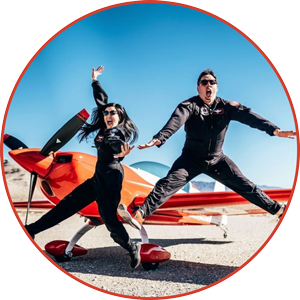The History of the Blue Angels
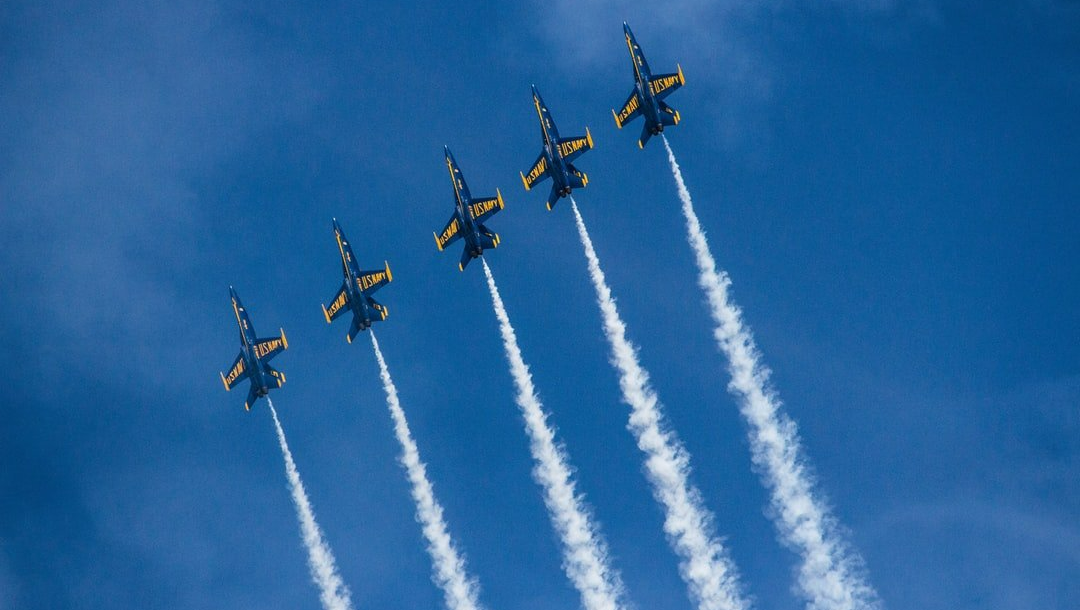
It has been 75 years since the formation of the Blue Angels aeronautic team. It all began with a plan to boost morale within the ranks of the U.S. Navy after World War II. Admiral Nimitz wanted to put together an event to create interest and build respect in the area of Naval aviation tactics. It has been 75 years since the first introductory public flight of the Blue Angels at Omaha, Nebraska in July of 1946. Here are some major milestones for the famous aerobatic team.
The 1940s
In the years immediately following World War II, the United States Navy Blue Angels attracted large audiences with daring aerobatic activities. Americans were able to show everyone the swift and awesome Blue Angels aircraft. The Blue Angels plane types included the F6 Hellcat, the F8 Bearcat, and the F9 Panther. In 1949, as shows began to increase, the team needed to begin using support aircraft for transport of the Blue Angels equipment and personnel between shows.
On September 10, 1949, the team moved to NAS Whiting Field in Florida. Unfortunately, tragedy struck the team on September 29, 1946, with a deadly Blue Angels crash. Pilot Ross Robinson was unable to recover from a dive which was part of the Cuban Eight tactic at NAS in Jacksonville.
The 1950s
In the 1950s, the team’s speed and maneuverability increased when they began using the F9 Cougar and the F-11 Tiger series. This is also when the six-plane delta formation was introduced. They continue using this formation in their shows to this very day.
During this decade, they also had a new Flight Leader. Lt. Commander Johnny Magda began using a Solo maneuver to captivate crowds while the others flew in the Diamond formation out of view.
When the Korean War began in 1950, the Blue Angels and the entire team reported for duty with Fighter Squadron 191 aboard the aircraft carrier USS Princeton. Sadly, on March 8, 1951, Flight Leader Johnny Magda was killed when his F9 Panther took heavy enemy fire. He was the first of the Blue Angels leaders to lose his life in combat.
In May of 1954 on Armed Forces Day, the Blue Angels first performed with the Air Force Thunderbirds team. If you’re torn between the Thunderbirds vs. Blue Angels being your favorite aerobatic team, this would’ve been the event for you!
Then in 1956, the Blue Angels performed for the very first time outside the borders of the United States of America. The team wowed crowds in Canada with daring air stunts and combat formation flyovers.
The 1960s
The 1960s delivered a new era of aviation technology, advanced jet engineers, and recognition worldwide for the team. In 1962, team leader Lieutenant Commander Ken Wallace and the Blue Angels team also inducted the Farvel tactic.
In 1963, the Cuban Missile Crisis caught the U.S. by surprise. NAS in Key West was very busy at this time, so the Blue Angels conducted winter training exercises at the NAS Litchfield Park in Tucson, Arizona. The team did their 1,000th show on July 4, 1963. The team spent much of the remaining decade performing Blue Angels flyovers around the world.
The 1970s
In 1970, the Blue Angels performed the first air show tour throughout South America. Then in 1971, they performed at countless shows throughout the world with some of the first being in the Far East like Korea, Taiwan, Japan, and the Philippines. In 1972, the team was also awarded the U.S. Navy Meritorious Unit Commendation for the previous two years.
In 1973, the Blue Angeles conducted additional European shows in England, France, Spain, and Italy. That same year, they did some memorable tours in places like Turkey and Tehran, Iran.
The team passed another milestone in 1978 when Penny Edwards made history as the first female enlisted sailor to rise to the ranks as a Blue Angels maintenance team member. Wondering if there are any female pilots in the Blue Angels? Read on to find out!
The 1980s
In 1985, Lieutenant Commander Donnie Cochran became the first African American to pilot one of the Blue Angels performance aircraft. Cochran flew the right and left-wing positions in the late 1980s. At the end of their 40th anniversary year on November 8, 1986, the team revealed the F/A-18 Hornet to the public for the first time, which is still in service today.
The 1990s
The Blue Angels continued strong into the next decade. They passed their 3,000th air show on September 7, 1990, and their 50th anniversary in 1996. During the 1990s, the team also completed sixteen shows in eight different countries. This included the countries of Bulgaria, Romania, and Russia.
2000-2021
In September of 2004, the Blue Angels were grounded for several weeks to clean up homes and workplaces after Hurricane Ivan dealt a huge blow to the Florida Panhandle. After cleanup, the team returned to practice sessions and show performances.
In March 2021, Maj. Katie Higgins Cook became the first female to pilot a Blue Angels aircraft! As a third-generation pilot, she is proud to carry on her family’s legacy and fly with the best aerobatic stunt pilots in the world. See her at the next performance by checking out the
Blue Angels schedule 2022.
Blue Angels FAQs
What Is the Plane that Flies Behind the Blue Angels?
If you’ve ever seen a Blue Angels flyover, you may have noticed that one plane seems to be flying out of formation behind the others. When six jets are flying in Delta formation, there is a seventh jet just behind the others to act as the spotter. When aircraft are flying so close together, it’s crucial to have an extra eye to catch potential errors before they happen.
Do the Blue Angels Fly in Combat?
Today, the Blue Angels do not fly in active combat situations. While on the team, pilots act out combat scenarios and fly in combat formations for performances only. However, Blue Angels jets can be combat-ready in just 72 hours if necessary.
How Many Planes Do the Blue Angels Have?
To date, the Blue Angels team has a total of 11 jets used in flight demonstrations across the world. There are 9 single-seat F/A-18E jets and 2 two-seat F/A-18F jets.
How Much Do Blue Angels Pilots Get Paid?
Because Blue Angel pilots are part of the United States Navy, they are paid according to their rank and time spent in service. Generally, that will vary between pilots.
Why Do the Blue Angels Not Wear G-Suits?
G-suits are designed for unpredictable changes in G-force on the body to prevent blood from pooling in the pilot’s legs. Because Blue Angels performances are planned out and the pilots know exactly what moves they will be making, they are able to use muscle contractions to combat the effects of G-force. Also, a G-suit could get in the way of having full control over the aircraft.
What Is the Fastest Fighter Jet in the World?
The fastest jet aircraft in the world is the Lockheed SR-71 Blackbird, which can reach speeds of 3,500 kph. That’s three times the speed of sound! Lockheed Martin designed some of the fastest aircraft developed in the world.
How Many Blue Angels Pilots Have Been Killed?
In 1946, Ross “Robby” Robinson was the first of 26 pilot fatalities in the team’s seventy-five-year history. Luckily, safety requirements have come a long way since the 1940s and continue to improve.
Ready to Fly Like a Blue Angel?
If you’re ready to feel the thrill of flying in a real stunt plane, Sky Combat Ace in Las Vegas offers fun aerobatic flying experiences for the whole family! Get a basic intro to the world of stunts as we fly the plane in our Operation Recon experience. If you’re feeling a little more daring, check out The Afterburner where you take the control stick and try out some basic maneuvers. Learn more by contacting our team today!
The Afterburner
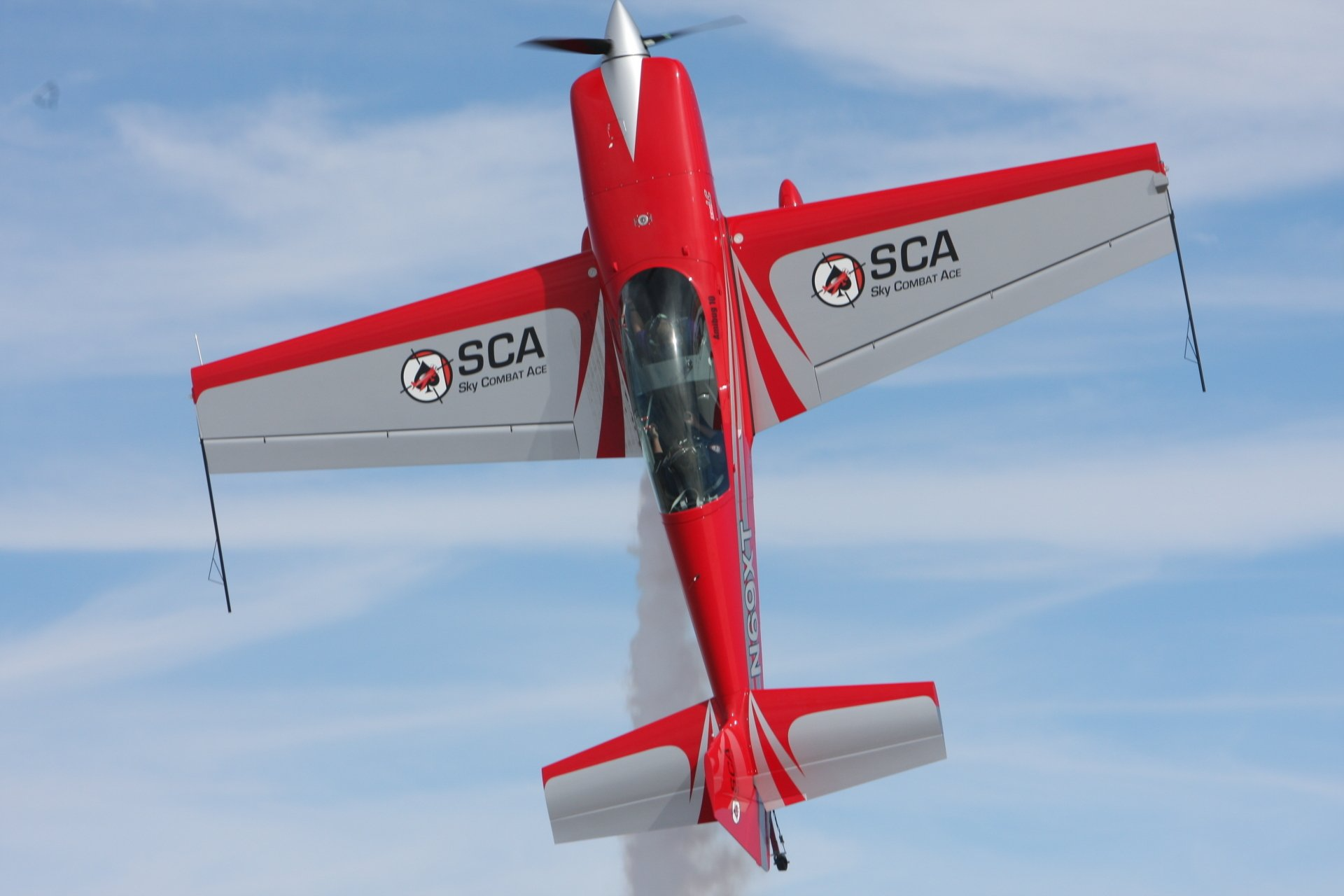
YOU GET TO FLY THE MANEUVERS
Why ride along when you can fly your own airshow routine…? Featuring both basic and advanced aerobatics, you take the controls and become your very own airshow pilot.
Sky Combat
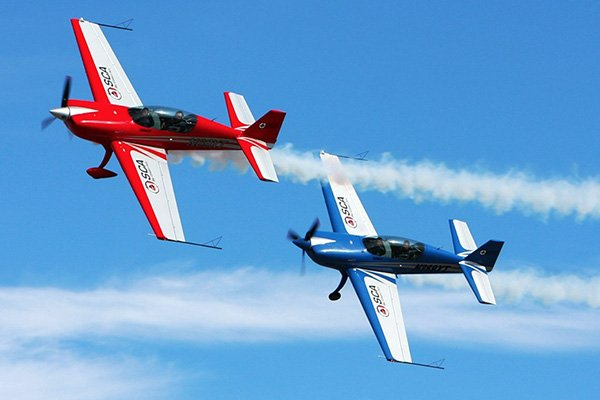
LASER TAG IN THE SKY!
Experience the thrill of air-to-air combat as you wage a battle for aerial dominance where there can be only one victor. YOU fly the plane with a trained SCA fighter pilot.
Top Gun
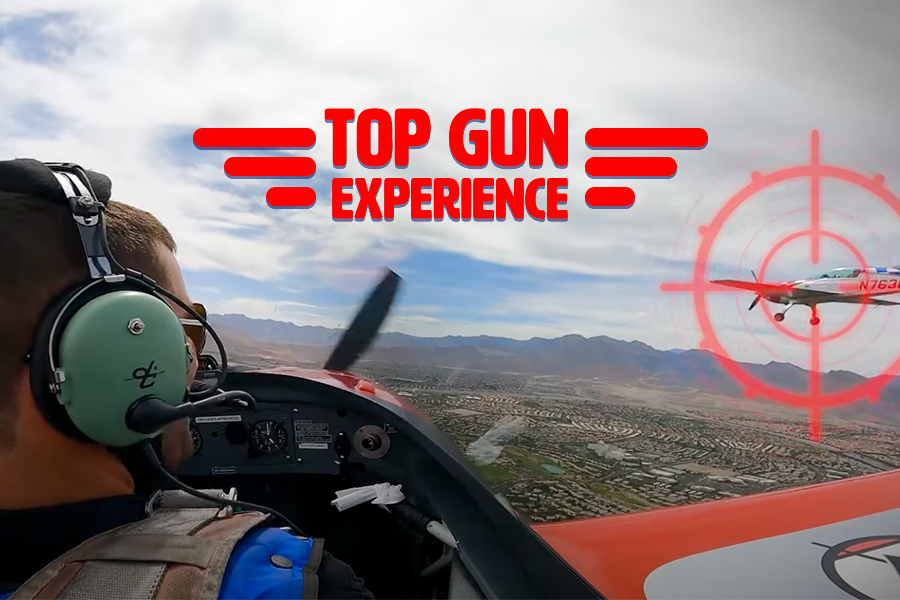
FLY LIKE A TOP GUN PILOT!
If you want to experience the most amazing, butt kicking, extreme adventure of a lifetime, then look no further than our Top Gun package!
Operation Recon
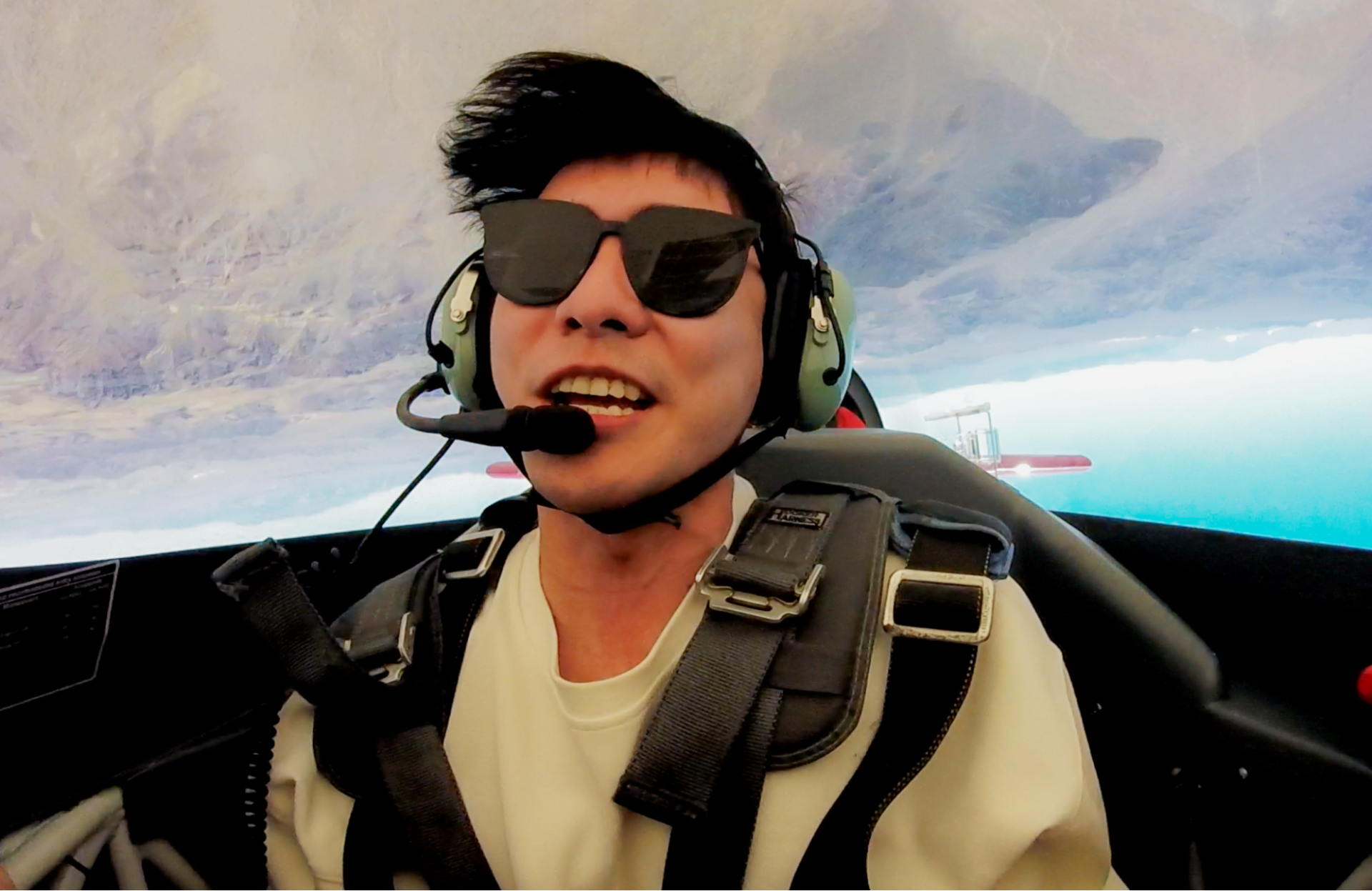
WE FLY THE MANEUVERS
Appropriate for the whole family, this is a great way to be introduced to the world of basic aerobatics. Think of it as a roller coaster without the rails.
Fly A Real Stunt Plane!
Sky Combat Ace was created by a U.S. Air Force veteran fighter pilot who wanted to make the thrill of flying fighter jets available to anyone who feels the need for speed.
Learn to fly a stunt plane under the supervision of our highly trained, FAA certified flight instructors. No experience necessary and YOU get to fly the plane!
OPERATIONAL AUTHORITY
All SCA flights are instructional in nature conducted by certified flight instructors in accordance with federal aviation regulations under 14 CFR Part 61 of the United States Code. Instruction will be provided during ground and flight portions for all flights.
